--
Las Flores Ranch
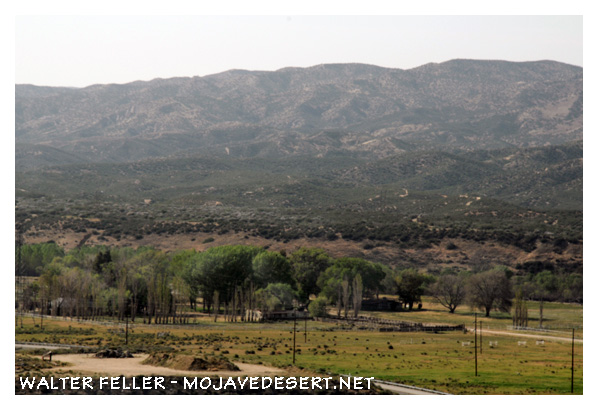
The historic Las Flores Ranch is located in Summit Valley near Hesperia, California; its origins date as far back as the 19th century. It once belonged to the greater Rancho Las Flores, a Mexican land grant given to Jose Maria Lugo in 1837, who was a well-known Californio ranchero. This grant covered much of what today is Summit Valley, a very strategic region due to natural resources and proximity to the Mojave River, which provided much-needed water for agriculture and livestock.
Early History and Indigenous Presence
Before any European settlers arrived, the Summit Valley area-a place that would become Las Flores Ranch-lay within the traditional homelands of the Serrano. These Native Americans were successful in living in the region by gathering plants and animals from the diverse flora and fauna of the valley. Summit Valley was one of the significant sites for hunting and gathering, with the Mojave River acting as an essential source both for the indigenous population and later the settlers who moved in.Rancho Las Flores
Rancho Las Flores, meaning in Spanish "The Flowers," was used mainly for cattle and sheep ranching because the Summit Valley soils were so fertile and apt for water availability. During the Mexican rule, there existed great ranchos like Las Flores, which were quintessential in California's early agricultural economy through the rearing of livestock and trade. The ranch consisted of thousands of acres, thus making it an important player in the regional economy at the time.The American Era and Transition
In 1848, the end of the Mexican-American War saw California become a part of the United States. Under the auspices of the Treaty of Guadalupe Hidalgo, many of these Mexican land grants were honored or subdivided. The case of Rancho Las Flores would be one of gradual subdivision of the land, with ownership shifting to numerous settlers and entrepreneurs who showed potential regarding development in the valley.Las Flores Ranch would continue to be a cattle ranch throughout the late 19th and early 20th centuries but would also start to adapt to agricultural ways as farming became increasingly more accepted in Southern California. In the area, the fertile land and mild climate made it pretty consistent for crops, while Summit Valley attracted more settlers once the region became accessible by railroads and improved transportation routes.
The role of Summit Valley within regional development.
Summit Valley, where Las Flores Ranch is situated, developed to be an important part of the development of the Mojave Desert due to the fact that it was based on key transportation routes. During the late 1800s and early 1900s, the region was a vital stopover for travelers and traders between the desert and the coastal cities of Southern California. The ranch joined other ranches in making economic development a reality in supplying food and materials to other growing communities.It wasn't until transportation improved that Summit Valley became more accessible, but its proximity to what would become the city of Hesperia meant it played a part in greater development across the High Desert. Las Flores Ranch would remain the icon of this region for its ranching history while growth across the region began to shift suburban.
Modern Era and Preservation
The suburban development of Southern California has overcome the former rural outskirts, including Hesperia and Summit Valley. Nowadays, Hesperia is a growing suburban city, and the area around Las Flores Ranch has been highly developed into residential and commercial use. Still, Las Flores Ranch remains an important historical landmark that reflects the agricultural and ranching past of the area.Efforts that have gone into the ranch's historic preservation speak of the ranch in relation to the broader story of Summit Valley and Hesperia. It has been remembered as active within the local economy and a focus of transition that the region went through from rural and ranching to suburban and densely populated.
The Las Flores Ranch is representative of California's ranching heritage, a product of Mexican land grants, and the adaptation of land over time to serve the needs of the growing Mojave Desert communities. Its history reflects the broader patterns of settlement, development, and economic change that shaped Southern California.
Near this spot on March 25, 1866, Edwin Parrish, Nephi Bemis and Pratt Whiteside, young cowboys employed on this ranch, were ambushed, killed and mutiliated by Piute Indians, who then burned several ranch buildings and fled down the Mojave River to the rocky narrows below Victorville.
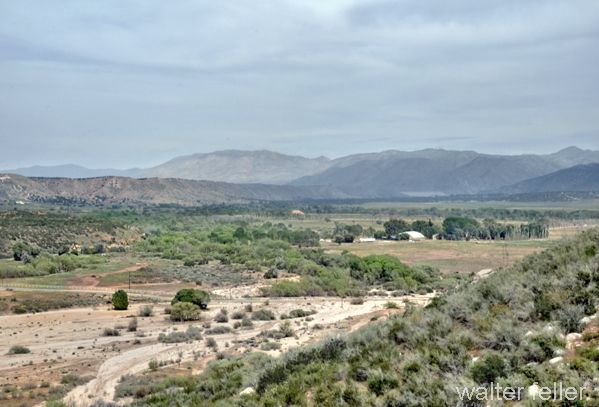
At or near this place was once located a Vanyume Indian village called Guapiabit, where, in 1808, the Franciscan Fray Zalvidea baptised two old men and three aged women.
The devoted father, soon to assume the administration of the Mission San Gabriel, had traveled from Santa Barbara as official diarist of an expedition sent out in quest of suitable sites for inland missions.

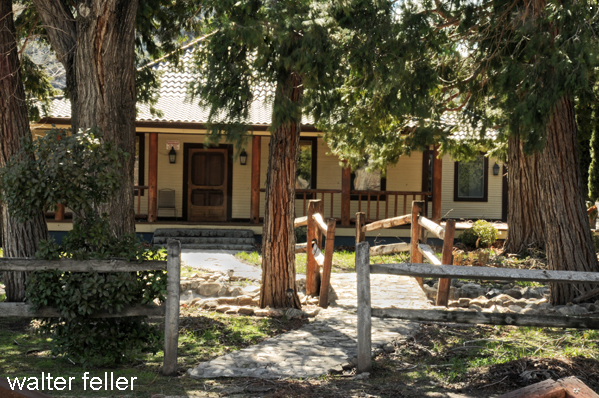
Until 1924, this fenced lane was used as a part of the county road down Summit Valley from Cajon Pass.
From here, a branch road once led across the West Fork, just below the present bridge, and followed up the stream to connect with old lumber roads in the mountains.
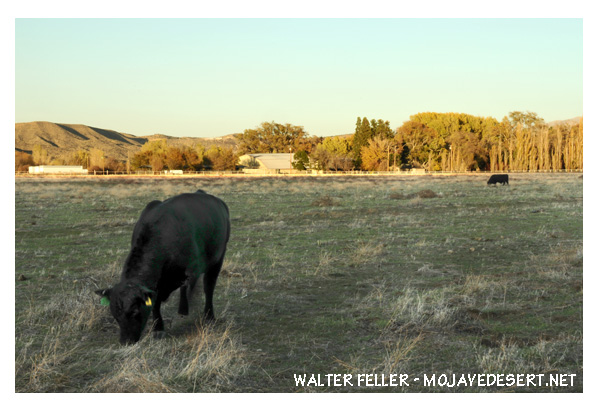
Mojave Trail
This secluded valley once bore a primitive traffic and knew the lithe tread of native feet.
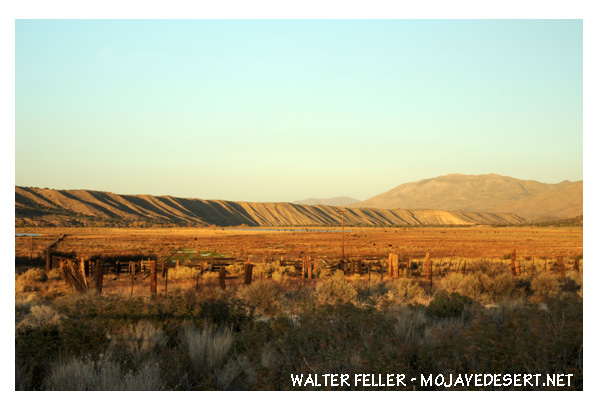
The ancient Indian trail from the Colorado River to the coast led up the Mojave River into the mountains and climbed Sawpit Canyon to the summit of the range.
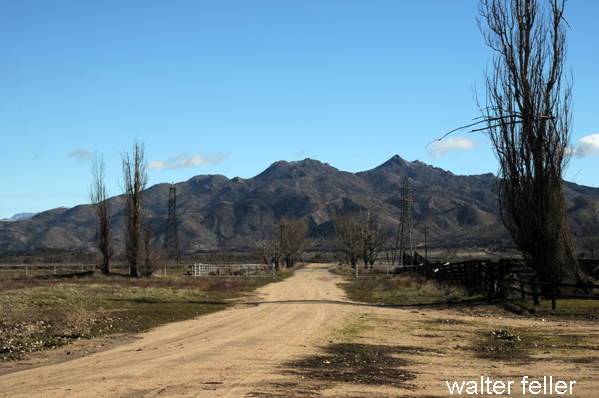
The Piute Indians, using this trail, left a pathway which guided explorer, priest and pioneer across the desert waste and over the mountain barrier.
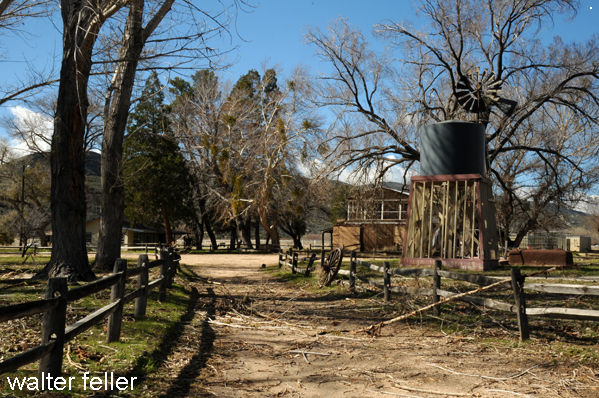
When the Mormons came, in 1851, immigrant wagons already worn a well marked road through Cajon Pass. Thereafter, the old Mojave Trail through Summit Valley was little used.

Billy Holcomb Chapter No. 1069, E Clampus Vitus.
Bear Lake, Baldwin Lake and Big Bear Lake
1917 Summit Valley History
The Great Indian Fight at Little Bear Valley
Chaguanoso
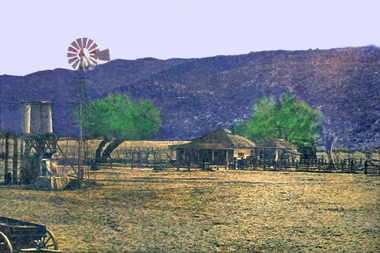
Las Flores ranch house - 1936
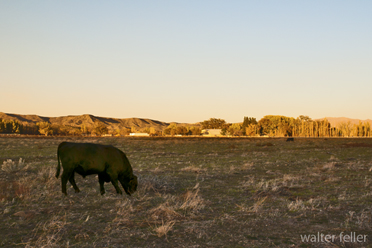
Ecosubsection - M262bg
Lower San Gorgonio Mountains
